Product Description
ADVANCE MARINE GEARBOX HCD138
ZheJiang STONE DIESEL ENGINE Co., Ltd CAN SUPPLY MARINE GEARBOX HCD138 MARINE GEARBOX.
| HCD138 MARINE GEARBOX MAX.275KW at 2500RPM | |||||||||
| Engine Speed:1000~2500RPM | |||||||||
|
|||||||||
| L*W*H:494*800*870mm Bell housing:SAE1,2 |
Net Weight:415Kg Flange:SAE 15,14 |
||||||||
| Options/Comments:PTO device available;Mechanical remote operation Centre distance:270mm … |
|||||||||
MARINE GEARBOX 06
MARINE GEARBOX 16A
MARINE GEARBOX 26
MARINE GEARBOX MA100
MARINE GEARBOX MA125A
MARINE GEARBOX MA142A
MARINE GEARBOX 40A
MARINE GEARBOX MB170
MARINE GEARBOX HC571
MARINE GEARBOX HC038A
MARINE GEARBOX HC65
MARINE GEARBOX 120B
MARINE GEARBOX 120C
MARINE GEARBOX MV100A
MARINE GEARBOX 135A
MARINE GEARBOX MB242
MARINE GEARBOX HCQ138
MARINE GEARBOX HC138
MARINE GEARBOX HCD138
MARINE GEARBOX HCA138
MARINE GEARBOX HC200
MARINE GEARBOX HCC200
MARINE GEARBOX HC201
MARINE GEARBOX MB270A
MARINE GEARBOX HCQ300
MARINE GEARBOX Z300
MARINE GEARBOX J300
MARINE GEARBOX D300A
MARINE GEARBOX T300
MARINE GEARBOX T300/1
MARINE GEARBOX HCA300
MARINE GEARBOX M300
MARINE GEARBOX MD300
MARINE GEARBOX HCQ401
MARINE GEARBOX HC400
MARINE GEARBOX HCD400A
MARINE GEARBOX HCT400A
MARINE GEARBOX HCT400/1
MARINE GEARBOX HCQ501
MARINE GEARBOX HCQ502
MARINE GEARBOX HC600A
MARINE GEARBOX HCD600A
MARINE GEARBOX HCT600A
MARINE GEARBOX HCT600A/1
MARINE GEARBOX HC701
MARINE GEARBOX HCQ700
MARINE GEARBOX HCD800
MARINE GEARBOX HCT800
MARINE GEARBOX HCT800/1
MARINE GEARBOX HCT800/2
MARINE GEARBOX HCT800/3
MARINE GEARBOX HCW800
MARINE GEARBOX HC900
MARINE GEARBOX HC1000
MARINE GEARBOX HCD1000
MARINE GEARBOX HCQ1000
MARINE GEARBOX HCT1100
MARINE GEARBOX HCW1100
MARINE GEARBOX HC1200
MARINE GEARBOX HC1200/1
MARINE GEARBOX HCT1200
MARINE GEARBOX HC1250
MARINE GEARBOX HCQ1400
MARINE GEARBOX HCD1400
MARINE GEARBOX HCT1400
MARINE GEARBOX HCD2000
MARINE GEARBOX HCT2000
MARINE GEARBOX HCD2700
| MODEL | MAX Capacity | speed | ratio | weight |
| 06 | 12HP | 1000~2000RPM | 2.52/ 3.05/ 3.5 | 58KG |
| 16A | 32HP | 1000~2000RPM | 2.07/ 2.48/ 2.95/ 3.35/ 3.83 | 84KG |
| 26 | 67HP | 1000~2500RPM | 2.5/ 3/ 3.5/ 4 | 92KG |
| MA100 | 37HP | 1500~3000RPM | 1.6/ 2/ 2.55/ 3.11/ 3.59/ 3.83 | 75KG |
| MA125A | 82HP | 1500~3000RPM | 2.03/ 2.46/ 3.04/ 3.57/ 4.05 | 115KG |
| MA142A | 102HP | 1500~3000RPM | 1.97/ 2.52/ 3.03/ 3.54/ 3.95/ 4.5 | 140Kg |
| 40A | 82HP | 750~2000RPM | 2.07/ 2.96/ 3.44 | 225KG |
| MB170 | 132HP | 1000~2500RPM | 1.97/ 2.52/ 3.04/ 3.54/ 3.96/ 4.5/ 5.06/ 5.47/ 5.88 | 240KG |
| HC571 | 80HP | 1500~3200RPM | 1.50/ 1.96/ 2.48/ 3.00/ 3.48 | 70KG |
| HC038A | 121HP | 1500~3200RPM | 1.51/ 2.03/ 2.52/ 2.92/ 3.45 | 70KG |
| HC65 | 183HP | 1000~2500RPM | 1.53/ 2.03/ 2.50/ 2.96/ 3.50 | 130KG |
| 120B | 215HP | 750~1800RPM | 2.03/ 2.81/ 3.73 | 400KG |
| 120C | 340HP | 1000~2500RPM | 1.48/ 1.94/ 2.45/ 2.96/ 3.35 | 225KG |
| MV100A | 408HP | 1500~3000RPM | 1.23/ 1.28/ 1.62/ 2.07/ 2.52/ 2.87 | 220KG |
| 135A | 272HP | 1000~2000RPM | 2.03/ 2.59/ 3.04/ 3.62/ 4.11/ 4.65/ 5.06/ 5.47/ 5.81 | 470KG |
| MB242 | 350HP | 1000~2500RPM | 3.04/ 3.52/ 3.95/ 4.53/ 5.12/ 5.56/ 5.88 | 385KG |
| HCQ138 | 390HP | 1000~2600RPM | 1.03/ 1.28/ 1.5/ 2.03/ 2.48/ 2.95 | 200KG |
| HC138 | 374HP | 1000~2500RPM | 2.0/ 2.52/ 3.0/ 3.57/ 4.05/ 4.45 | 360KG |
| HCD138 | 374HP | 1000~2500RPM | 5.05 / 5.63/ 6.06/ 6.47 | 415KG |
| HCA138 | 390HP | 1000~2600RPM | 1.095/ 1.28/ 1.50/ 2.03/ 2.48/ 3.0 | 385KG |
| HC200 | 440HP | 1000~2200RPM | 1.48/ 2.00/ 2.28 | 280KG |
| HCC200 | 500HP | 1000~2500RPM1.034/ 1.451/ 1.997/ 2.422/ 2.935 | 400KG | |
| HC201 | 500HP | 1000~2500RPM | 2.46/ 2.955/ 3.526 | 350KG |
| MB270A | 500HP | 1000~2500RPM | 4.05/ 4.53/ 5.12/ 5.5/ 5.59/ 6.39/ 6.82 | 675KG |
| HCQ300 | 782HP | 1000~2300RPM | 1.06/ 1.46/ 2.05/ 2.38 | 350KG |
| Z300 | 910HP | 750~2300RPM | 1.87/ 2.04/ 2.54/ 3/ 3.53/ 4.10/ 4.47/ 4.61/ 4.94/ 5.44 | 740KG |
| J300 | 875HP | 750~2300RPM | 2.04/ 2.54/ 3.0/ 3.47/ 3.95 | 740KG |
| D300A | 805HP | 1000~2300RPM | 4/ 4.48/ 5.05/ 5.52/ 5.9/ 6.56/ 7.06/ 7.63 | 880KG |
| T300 | 759HP | 1000~2300RPM | 4.95/ 6.03/ 6.65/ 7.04/ 7.54/ 8.02/ 8.47 | 1120KG |
| T300/1 | 611HP | 1000~2300RPM | 8.94/ 9.45 | 1120KG |
| HCA300 | 850HP | 1000~2500RPM | 1.50/ 2.00/ 2.57/ 2.95 | 370KG |
| M300 | 805HP | 1000~2300RPM | 1.45/ 2.00/ 2.52/ 3.05/ 3.45/ 3.94 | 700KG |
| MD300 | 805HP | 1000~2300RPM | 3.96/ 4.48/ 4.96/ 5.52/ 5.9 | 940KG |
| HCQ401 | 1035HP | 1500~2300RPM | 1.00/ 1.12/ 1.25/ 1.50/ 1.76/ 2.04/ 2.50 | 480KG |
| HC400 | 810HP | 1000~1800RPM | 1.50/ 1.77/ 2.04/ 2.50/ 2.86/ 3.0/ 3.42/ 4.06/ 4.61/ / 4.94 | 820KG |
| HCD400A | 810HP | 1000~1800RPM | 3.96/ 4.33/ 4.43/ 4.70/ 5.00/ 5.53/ 5.89 | 1100KG |
| HCT400A | 945HP | 1000~2100RPM | 6.09/ 6.49/ 6.93/ 7.42/ 7.95/ 8.4/ 9/ 9.47 | 1100KG |
| HCT400/1 | 945HP | 1000~2100RPM | 8.15/ 8.69/ 9.27/ 9.94/ 10.6/ 11.46/ 12 | 1500KG |
| HCQ501 | 1265HP | 1000~2300RPM | 1.03/ 1.46/ 2/ 2.45 | 560KG |
| HCQ502 | 1265HP | 1000~2300RPM | 2.95 | 700KG |
| HC600A | 1365HP | 1000~2100RPM | 2/ 2.48/ 3/ 3.58/ 3.89 | 1300KG |
| HCD600A | 1365HP | 1000~2100RPM | 4.18/ 4.43/ 4.7/ 5/ 5.44/ 5.71 | 1550KG |
| HCT600A | 1260HP | 1000~2100RPM | 6.06/ 6.49/ 6.97/ 7.51/ 8.04/ 8.66/ 9.35 | 1600KG |
| HCT600A/1 | 1260HP | 1000~2100RPM | 7.69/ 8.23/ 8.82/ 9.47/ 10.8/ 11.65/ 12.57 | 1700KG |
| HC701 | 1285HP | 1200~2400RPM | 1.93/ 2.58/ 2.90/ 3.26/ 3.01/ 4.60/ 5.17/ 6.18/ 7.00/ 7.47 | 2000KG |
| HCQ700 | 1875HP | 1000~2500RPM | 1.5~2.5/ 2.78/ 2.96 | 900KG |
| HCD800 | 1530HP | 1000~1800RPM | 3.427/ 3.96/ 4.391/ 4.905/ 5.474/ 5.889 | 2200KG |
| HCT800 | 1530HP | 800~1800RPM | 4.95/ 5.57/ 5.68/ 5.93/ 6.43/ 6.86/ 7.33/ 7.84/ 8.4 | 2700KG |
| HCT800/1 | 1530HP | 800~1800RPM | 6.91/ 7.28/ 7.69/ 8.12/ 8.6/ 9.12/ 9.68/ 10.3/ 10.98/ 11.76/ 12.43/ 13.17/ 13.97/ 14.85/ 15.82/ 16.58/ 20.1 | 32000KG |
| HCT800/2 | 1668HP | 1000~1800RPM | 13.118/ 13.811/ 14.545/ 15.326/ / 16.157/ 17.044/ 17.991/ 20.267/ 22.176 | 4000KG |
| HCT800/3 | 1460HP | 1000~1800RPM | 16.56/ 17.95/ 20.2 | 4200KG |
| HCW800 | 1886HP | 1500~1900RPM | 12.584/ 13.244/ 13.945/ 14.68/ 15.46/15.915/ 16.285/ 17.16/ 17.696/ 18.267/ 19.078/ 19.714/ 20.13 | 3800KG |
| HC900 | 1436HP | 1000~1800RPM | 1.46/ 2.04/ 2.47/ 3/ 3.6/ 4.08/ 4.63/ 4.95 | 1600KG |
| HC1000 | 1898HP | 600~1900RPM | 2/ 2.5/ 3.04/ 3.48/ 4.06 | 1800KG |
| HCD1000 | 1898HP | 600~1900RPM | 3.429/ 3.96/ 4.391/ 4.45/ 4.905/ 5.06/ 5.474/ 5.833 | 1900KG |
| HCQ1000 | 2300HP | 600~2300RPM | 1.176~2.842/ 3.1 | 1100KG |
| HCT1100 | 1841HP | 700~1600RPM | 5.6/ 5.98/ 6.39/ 6.85/ 7.35/ 7.9 | 3000 |
| HCW1100 | 2280HP | 1500~1800RPM | 15.882/ 16.546/ 17.243/ 17.973/ 18.740/ 19.547/ 20.395 | 6000KG |
| HC1200 | 2276HP | 700~1800RPM | 2.03/ 2.476/ 2.5/ 2.96/ 3.55/ 3.79/ 4.05/ 4.2/ 4.47 | 1840 |
| HC1200/1 | 2276HP | 700~1800RPM | 3.74/ 3.95/ 4.45/ 5/ 5.25/ 5.58 | 2500 |
| HCT1200 | 2571HP | 1000~1600RPM | 5.05/ 5.60/ 5.98/ 6.39/ 6.85/ 7.35/ 7.9 | 3000 |
| HC1250 | 1654HP | 400~1800RPM | 2.03/ 2.48/ 3.04/ 3.48/ 3.95 | 2200KG |
| HCQ1400 | 2940HP | 1000~2100RPM | 1.517/ 2.00/ 2.476/ 3.0 | 1430KG |
| HCD1400 | 2520HP | 600~1800RPM | 4.04/ 4.27/ 4.52/ 4.8/ 5.045/ 5.5 | 2800KG |
| HCT1400 | 2521HP | 600~1800RPM | 5.031/ 5.524/ 5.966/ 6.485/ 7.031/ 7.497/ 8.571/ 8.465/ 8.593/ 8.984/ 9.118/ 9.552 | 3700 |
| HCD2000 | 3571HP | 600~1500RPM | 3/ 3.577/ 3.958/ 4.455/ 4.95/ 5.263/ 5.429/ 5.75/ 6.053 | 4000KG |
| HCT2000 | 3019HP | 500~1500RPM | 4700KG | |
| HCD2700 | 3903HP | 500~1400RPM | 3.65/ 4.042/ 4.5/ 5.05/ 5.467/ 6.105/ | 6000KG |
|
HC138 MARINE GEARBOX MAX.275KW at 2500RPM |
|||||
|
Engine Speed:1000~2500RPM |
|||||
|
|||||
|
L*W*H:520*792*760mm |
Net Weight:360Kg |
||||
|
Options/Comments:PTO device available;Mechanical remote operation |
|||||
/* January 22, 2571 19:08:37 */!function(){function s(e,r){var a,o={};try{e&&e.split(“,”).forEach(function(e,t){e&&(a=e.match(/(.*?):(.*)$/))&&1
| Application: | Marine |
|---|---|
| Layout: | Coaxial |
| Hardness: | Soft Tooth Surface |
| Installation: | Horizontal Type |
| Step: | Single-Step |
| Type: | Worm Gear Box |
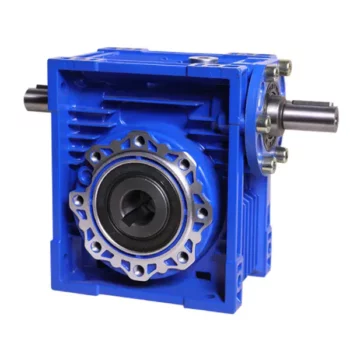
Can a Worm Gearbox be Used for High-Speed Applications?
Worm gearboxes are generally not recommended for high-speed applications due to their inherent design characteristics. Here’s why:
- Efficiency: Worm gearboxes tend to have lower efficiency compared to other gearbox types, which means they can generate more heat and experience more energy loss at high speeds.
- Heat Generation: The sliding contact between the worm and worm wheel in a worm gearbox can lead to significant friction and heat generation, especially at high speeds. This heat can cause thermal expansion, affecting the gearbox’s performance and longevity.
- Wear and Noise: High speeds can exacerbate wear and noise issues in worm gearboxes. Increased friction and wear can lead to faster degradation of components, resulting in reduced lifespan and increased maintenance needs.
- Backlash: Worm gearboxes may have higher backlash compared to other gearbox types, which can impact precision and accuracy in high-speed applications.
While worm gearboxes are more commonly used in applications requiring high torque and moderate speeds, they may not be the best choice for high-speed scenarios. If high-speed operation is a requirement, other gearbox types such as helical, spur, or planetary gearboxes are often better suited due to their higher efficiency, lower heat generation, and reduced wear at elevated speeds.
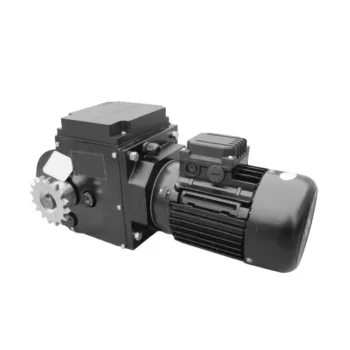
Worm Gearbox Applications in Robotics and Automation
Worm gearboxes play a crucial role in various robotics and automation applications due to their unique characteristics and benefits. Here are some common applications where worm gearboxes are used:
- Robotic Arm Movement: Worm gearboxes are employed in robotic arms to provide precise and controlled movement. The self-locking property of worm gearboxes helps maintain the arm’s position without requiring additional brakes.
- Conveyor Systems: In automated production lines, worm gearboxes are used to drive conveyor belts and move materials or products along assembly lines with accuracy.
- Precision Positioning: Worm gearboxes are used in precision positioning systems, such as those found in pick-and-place robots and CNC machines. They ensure accurate and repeatable movements.
- Pan and Tilt Mechanisms: Worm gearboxes are utilized in pan and tilt mechanisms of surveillance cameras, robotic cameras, and sensors. The self-locking feature helps stabilize and maintain the desired angle.
- Automated Gates and Doors: Worm gearboxes are used in automated gate and door systems to control their opening and closing movements smoothly and safely.
- Material Handling: Robots in warehouses and distribution centers use worm gearboxes to manipulate and lift objects, enhancing efficiency in material handling.
- Medical Robotics: Worm gearboxes are employed in medical robots for surgical procedures, diagnostic equipment, and rehabilitation devices, ensuring precise and controlled movements.
- Industrial Robots: Industrial robots rely on worm gearboxes for various tasks, including welding, painting, assembly, and packaging, where precise movements are essential.
- Automated Testing Equipment: In testing and inspection applications, worm gearboxes provide the necessary movement and positioning for accurate testing and measurements.
- Food and Beverage Industry: Worm gearboxes are used in automated food processing and packaging systems, ensuring hygienic and precise movement of products.
Worm gearboxes are preferred in these applications due to their compact size, high torque output, self-locking feature, and ability to provide a right-angle drive. However, selecting the right gearbox requires considering factors such as load, speed, efficiency, and environmental conditions.
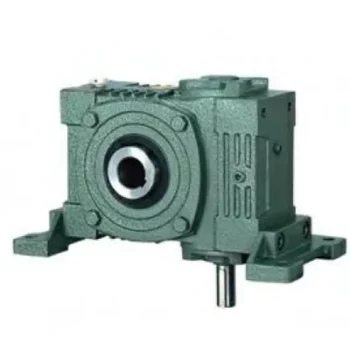
Advantages of Using a Worm Reducer in Mechanical Systems
Worm reducers offer several advantages that make them suitable for various mechanical systems:
- High Gear Reduction Ratio: Worm gearboxes provide significant speed reduction, making them ideal for applications that require a high gear reduction ratio without the need for multiple gears.
- Compact Design: Worm reducers have a compact and space-saving design, allowing them to be used in applications with limited space.
- Self-Locking: Worm gearboxes exhibit self-locking properties, which means that the worm screw can prevent the worm wheel from reversing its motion. This is beneficial for applications where the gearbox needs to hold a load in place without external braking mechanisms.
- Smooth and Quiet Operation: Worm gearboxes operate with a sliding motion between the teeth, resulting in smoother and quieter operation compared to some other types of gearboxes.
- High Torque Transmission: Worm gearboxes can transmit high torque levels, making them suitable for applications that require powerful torque output.
- Heat Dissipation: The sliding action between the worm screw and the worm wheel contributes to heat dissipation, which can be advantageous in applications that generate heat during operation.
- Stable Performance: Worm reducers offer stable and reliable performance, making them suitable for continuous operation in various industrial and mechanical systems.
Despite these advantages, it’s important to note that worm gearboxes also have limitations, such as lower efficiency compared to other gear types due to the sliding motion and potential for higher heat generation. Therefore, selecting the appropriate type of gearbox depends on the specific requirements and constraints of the application.


editor by CX 2024-04-15
China Standard S Series CZPT Shaft Helical Worm Gearbox Tractor Pto Multiplier Gearbox 11kw Gearbox Marine Transmission Gear Box synchromesh gearbox
Product Description
Product Parameters
S series geared motor speed reducer with 90 Degree Gear box
Components:
1. Housing: Cast Iron
2. Gears: Helical-worm Gears
3. Input Configurations: Equipped with Electric Motors
Solid Shaft Input, IEC-normalized Motor Flange
4. Applicable Motors:
Single Phase AC Motor, Three Phase AC Motor
Brake Motors, Inverter Motors
Multi-speed Motors, Explosion-proof Motor
Roller Motor
5. Output Configurations: CHINAMFG Shaft Output
Hollow Shaft Output.
Features:
1. Modular design, compact structure
2. Low noise
3. Hollow output shaft with keyed connection, shrink disk, or torque arm
4. Can be combined with other types of gearboxes (Such as R Series, UDL Series)
|
Models |
Output Shaft Dia. |
Input Shaft Dia. |
Power(kW) |
Ratio |
Max. Torque(Nm) |
|
|
Solid Shaft |
Hollow Shaft |
|||||
|
S38 |
20mm |
20mm |
16mm |
0.18~0.75 |
10.27~152 |
90 |
|
S48 |
25mm |
25/30mm |
16mm |
0.18~1.5 |
11.46~244.74 |
170 |
|
S58 |
30mm |
30/35mm |
16mm |
0.18~3 |
10.78~196.21 |
295 |
|
S68 |
35mm |
40/45mm |
19mm |
0.25~5.5 |
11.55~22 |
520 |
|
S78 |
45mm |
50/60mm |
24mm |
0.55~7.5 |
9.96~241.09 |
1270 |
|
S88 |
60mm |
60/70mm |
28mm |
0.75~15 |
11.83~222 |
2280 |
|
S98 |
70mm |
70/90mm |
38mm |
1.5~22 |
12.75~230.48 |
4000 |
/* January 22, 2571 19:08:37 */!function(){function s(e,r){var a,o={};try{e&&e.split(“,”).forEach(function(e,t){e&&(a=e.match(/(.*?):(.*)$/))&&1
| Hardness: | Hardened Tooth Surface |
|---|---|
| Installation: | 90 Degree |
| Layout: | Expansion |
| Gear Shape: | Bevel Gear |
| Step: | Single-Step |
| Type: | Gear Reducer |
| Samples: |
US$ 150/Piece
1 Piece(Min.Order) | |
|---|
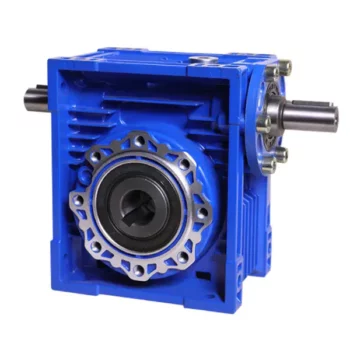
What are the Noise Levels Associated with Worm Gearboxes?
The noise levels associated with worm gearboxes can vary depending on several factors, including the design, quality, operating conditions, and maintenance of the gearbox. Here are some key points to consider:
- Design and Quality: Well-designed and high-quality worm gearboxes tend to produce lower noise levels. Factors such as gear tooth profile, precision manufacturing, and proper alignment can contribute to reduced noise.
- Gear Engagement: The way the worm and worm wheel engage and mesh with each other can impact noise levels. Proper tooth contact and alignment can help minimize noise during operation.
- Lubrication: Inadequate or improper lubrication can lead to increased friction and wear, resulting in higher noise levels. Using the recommended lubricant and maintaining proper lubrication levels are important for noise reduction.
- Operating Conditions: Operating the gearbox within its specified load and speed limits can help prevent excessive noise generation. Overloading or operating at high speeds beyond the gearbox’s capabilities can lead to increased noise.
- Backlash: Excessive backlash or play between the gear teeth can lead to impact noise as the teeth engage. Proper backlash adjustment can help mitigate this issue.
- Maintenance: Regular maintenance, including gear inspection, lubrication checks, and addressing any wear or damage, can help keep noise levels in check.
It’s important to note that while worm gearboxes can produce some noise due to the nature of gear meshing, proper design, maintenance, and operation can significantly reduce noise levels. If noise is a concern for your application, consulting with gearbox manufacturers and experts can provide insights into selecting the right gearbox type and implementing measures to minimize noise.
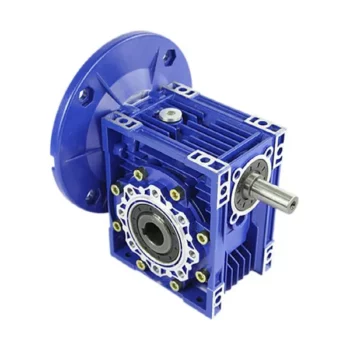
Energy Efficiency of a Worm Gearbox: What to Expect
The energy efficiency of a worm gearbox is an important factor to consider when evaluating its performance. Here’s what you can expect in terms of energy efficiency:
- Typical Efficiency Range: Worm gearboxes are known for their compact size and high gear reduction capabilities, but they can exhibit lower energy efficiency compared to other types of gearboxes. The efficiency of a worm gearbox typically falls in the range of 50% to 90%, depending on various factors such as design, manufacturing quality, lubrication, and load conditions.
- Inherent Losses: Worm gearboxes inherently involve sliding contact between the worm and worm wheel. This sliding contact generates friction, leading to energy losses in the form of heat. The sliding action also contributes to lower efficiency when compared to gearboxes with rolling contact.
- Helical-Worm Design: Some manufacturers offer helical-worm gearbox designs that combine elements of helical and worm gearing. These designs aim to improve efficiency by incorporating helical gears in the reduction stage, which can lead to higher efficiency compared to traditional worm gearboxes.
- Lubrication: Proper lubrication plays a significant role in minimizing friction and improving energy efficiency. Using high-quality lubricants and ensuring the gearbox is adequately lubricated can help reduce losses due to friction.
- Application Considerations: While worm gearboxes might have lower energy efficiency compared to other types of gearboxes, they still offer advantages in terms of compactness, high torque transmission, and simplicity. Therefore, the decision to use a worm gearbox should consider the specific requirements of the application, including the trade-off between energy efficiency and other performance factors.
When selecting a worm gearbox, it’s essential to consider the trade-offs between energy efficiency, torque transmission, gearbox size, and the specific needs of the application. Regular maintenance, proper lubrication, and selecting a well-designed gearbox can contribute to achieving the best possible energy efficiency within the limitations of worm gearbox technology.
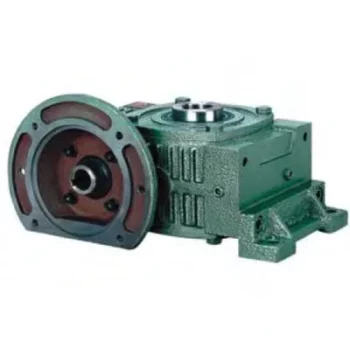
Can a Worm Gearbox Provide High Torque Output?
Yes, a worm gearbox is capable of providing high torque output due to its unique design and principle of operation. Worm gears are known for their high torque multiplication capabilities, making them suitable for applications that require significant torque transfer.
The torque output of a worm gearbox is influenced by several factors:
- Lead Angle: The lead angle of the worm affects the mechanical advantage of the gear system. A larger lead angle can result in higher torque output.
- Worm Diameter: A larger diameter worm can offer increased torque output as it provides more contact area with the gear.
- Gear Ratio: The gear ratio between the worm and the gear determines the torque multiplication factor. A higher gear ratio leads to higher torque output.
- Lubrication: Proper lubrication is essential to minimize friction and ensure efficient torque transmission.
- Material and Quality: High-quality materials and precision manufacturing contribute to the gearbox’s ability to handle high torque loads.
Due to their ability to provide high torque output in a compact form factor, worm gearboxes are commonly used in various industrial applications, including heavy machinery, construction equipment, conveyor systems, and more.


editor by CX 2024-03-13
China OEM CZPT Marine Gearbox 300 for Boat gearbox and motor
Product Description
Product Description
| Product name | HangZhou advance marine gearbox 300 for boat |
| Reduction Ratio | 1.45 2.00 2.52 3.05 3.45 3.94 |
| Max power input | 850HP 2300rpm |
| Engine speed range | 1000-2300rpm |
| Center Distance | 255mm |
| Gross Weight | 700kg |
| Size(mm) | 680*980*1026 |
| Futures | 1 , More rugged and reliable 2 , High torque output hence pulling power is high 3 , Gears are tall 4 , Fuel efficiency is high 5 , Service requirement is less frequent |
Detailed Photos
Company Profile
| Application: | Motor, Marine |
|---|---|
| Layout: | Coaxial |
| Hardness: | Hardened Tooth Surface |
| Installation: | Vertical Type |
| Step: | Stepless |
| Type: | Worm Gear Box |
| Customization: |
Available
| Customized Request |
|---|
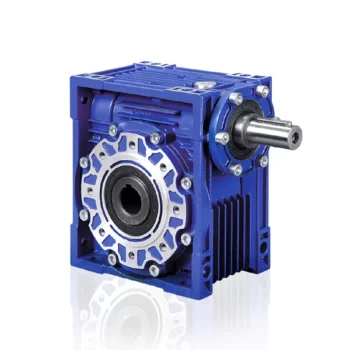
Is it Possible to Reverse the Direction of a Worm Gearbox?
Yes, it is possible to reverse the direction of a worm gearbox by changing the orientation of either the input or output shaft. However, reversing the direction of a worm gearbox can have some implications that need to be considered:
- Efficiency: Reversing the direction of a worm gearbox can potentially affect its efficiency. Worm gearboxes are typically more efficient in one direction of rotation due to the design of the worm and worm wheel.
- Backlash: Reversing the direction of rotation might lead to increased backlash or play in the gearbox, which can impact precision and smooth operation.
- Lubrication: Depending on the gearbox’s design, reversing the direction could affect lubrication distribution and lead to uneven wear on the gear teeth.
- Load: Reversing the direction might also impact the gearbox’s load-carrying capacity, especially if it’s designed for predominantly one-way operation.
- Noise and Vibration: Direction reversal can sometimes result in increased noise and vibration due to changes in gear engagement and meshing behavior.
If you need to reverse the direction of a worm gearbox, it’s advisable to consult the gearbox manufacturer’s guidelines and recommendations. They can provide insights into whether the specific gearbox model is suitable for reversible operation and any precautions or adjustments needed to ensure proper functioning.

How to Calculate the Input and Output Speeds of a Worm Gearbox?
Calculating the input and output speeds of a worm gearbox involves understanding the gear ratio and the principles of gear reduction. Here’s how you can calculate these speeds:
- Input Speed: The input speed (N1) is the speed of the driving gear, which is the worm gear in this case. It is usually provided by the manufacturer or can be measured directly.
- Output Speed: The output speed (N2) is the speed of the driven gear, which is the worm wheel. To calculate the output speed, use the formula:
N2 = N1 / (Z1 * i)
Where:
N2 = Output speed (rpm)
N1 = Input speed (rpm)
Z1 = Number of teeth on the worm gear
i = Gear ratio (ratio of the number of teeth on the worm gear to the number of threads on the worm)
It’s important to note that worm gearboxes are designed for gear reduction, which means that the output speed is lower than the input speed. Additionally, the efficiency of the gearbox, friction, and other factors can affect the actual output speed. Calculating the input and output speeds is crucial for understanding the performance and capabilities of the worm gearbox in a specific application.
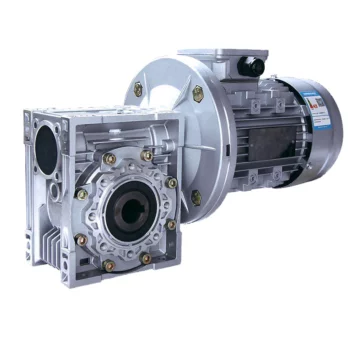
Preventing Backlash in a Worm Gearbox
Backlash in a worm gearbox can lead to reduced accuracy, positioning errors, and decreased overall efficiency. Here are steps to prevent or minimize backlash:
- High-Quality Components: Use high-quality worm gears and worm wheels with tight manufacturing tolerances. Precision components will help reduce backlash.
- Proper Meshing: Ensure the worm gear and worm wheel are properly aligned and meshed. Improper meshing can lead to increased backlash.
- Preload: Applying a small amount of preload to the worm gear can help reduce backlash. However, excessive preload can increase friction and wear.
- Anti-Backlash Mechanisms: Consider using anti-backlash mechanisms, such as spring-loaded systems or adjustable shims, to compensate for any inherent backlash.
- Lubrication: Proper lubrication can reduce friction and play a role in minimizing backlash. Use a lubricant that provides good film strength and reduces wear.
- Maintenance: Regularly inspect and maintain the gearbox to identify and address any changes in backlash over time.
It’s important to strike a balance between reducing backlash and maintaining smooth operation. Consulting with gearbox experts and following manufacturer guidelines will help you optimize your worm gearbox’s performance while minimizing backlash.


editor by CX 2023-11-18
China factory High Rpm Gearbox Reduction Slew Drive Servo Motor Rear Wheel Rotary Tiller Small Marine Diesel Engine Motorcycle Speed Increasing with Good quality
Product Description
High Rpm Gearbox Reduction Slew Drive Servo Motor Rear Wheel Rotary Tiller Small Marine Diesel Engine Motorcycle Speed Increasing
Quick Details:
Type: XB series Cycloidal Pin Wheel Speed Reducer
Input Speed: 1000-1500rmp
Output Speed: 0.3-280rpm
Certification: ISO9001 CE
Ex Power:0.09-132KW
Warranty: 1Years
| Application: | Motor, Electric Cars, Motorcycle, Machinery, Marine, Toy, Agricultural Machinery, Car |
|---|---|
| Hardness: | Soft Tooth Surface |
| Installation: | 90 Degree |
| Layout: | Coaxial |
| Gear Shape: | Conical – Cylindrical Gear |
| Step: | Stepless |
| Samples: |
US$ 9999/Piece
1 Piece(Min.Order) | |
|---|
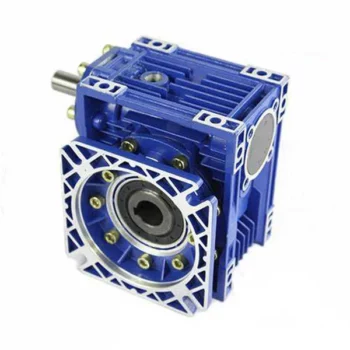
Common Problems and Troubleshooting for Worm Gearboxes
Worm gearboxes, like any mechanical component, can experience various issues over time. Here are some common problems that may arise and possible troubleshooting steps:
- Overheating: Overheating can occur due to factors such as inadequate lubrication, excessive loads, or high operating temperatures. Check lubrication levels, ensure proper ventilation, and reduce loads if necessary.
- Noise and Vibration: Excessive noise and vibration may result from misalignment, worn gears, or improper meshing. Check for misalignment, inspect gear teeth for wear, and ensure proper gear meshing.
- Leakage: Oil leakage can be caused by damaged seals or gaskets. Inspect seals and gaskets, and replace them if necessary.
- Reduced Efficiency: Efficiency loss can occur due to friction, wear, or misalignment. Regularly monitor gearbox performance, ensure proper lubrication, and address any wear or misalignment issues.
- Backlash: Excessive backlash can affect precision and accuracy. Adjust gear meshing and reduce backlash to improve performance.
- Seizure or Binding: Seizure or binding can result from inadequate lubrication, debris, or misalignment. Clean the gearbox, ensure proper lubrication, and address misalignment issues.
- Worn Gears: Worn gear teeth can lead to poor performance. Regularly inspect gears for signs of wear, and replace worn gears as needed.
- Seal Wear: Seals can wear over time, leading to leakage and contamination. Inspect seals regularly and replace them if necessary.
If you encounter any of these problems, it’s important to address them promptly to prevent further damage and maintain the performance of your worm gearbox. Regular maintenance, proper lubrication, and addressing issues early can help extend the lifespan and reliability of the gearbox.

Worm Gearboxes in Conveyor Systems: Benefits and Considerations
Worm gearboxes play a crucial role in conveyor systems, offering several benefits and considerations for their effective integration:
- Space Efficiency: Worm gearboxes have a compact design, making them suitable for applications with limited space, such as conveyor systems.
- High Reduction Ratios: Worm gearboxes can achieve high reduction ratios in a single stage, allowing for slower conveyor speeds without sacrificing torque.
- Self-Locking: Worm gearboxes have inherent self-locking properties, preventing the conveyor from moving when the motor is not actively driving it.
- Directional Control: Worm gearboxes facilitate directional control, enabling the conveyor to move forward or reverse as needed.
- Low Noise: Worm gearboxes often produce lower noise levels compared to other gearbox types, contributing to quieter conveyor operation.
However, there are also considerations to keep in mind when using worm gearboxes in conveyor systems:
- Efficiency: Worm gearboxes may have lower mechanical efficiency compared to some other gearbox types, leading to energy losses.
- Heat Generation: Worm gearboxes can generate more heat due to sliding contact between the worm and gear, necessitating proper cooling mechanisms.
- Lubrication: Proper lubrication is critical to prevent wear and ensure efficient operation. Regular maintenance is required to monitor lubrication levels.
- Load and Speed: Worm gearboxes are well-suited for applications with high torque and low to moderate speed requirements. They may not be optimal for high-speed conveyors.
Before integrating a worm gearbox into a conveyor system, it’s important to carefully consider the specific requirements of the application, including load, speed, space constraints, and efficiency needs. Consulting with gearbox experts and manufacturers can help ensure the right choice for the conveyor’s performance and longevity.

Can a Worm Gearbox Provide High Torque Output?
Yes, a worm gearbox is capable of providing high torque output due to its unique design and principle of operation. Worm gears are known for their high torque multiplication capabilities, making them suitable for applications that require significant torque transfer.
The torque output of a worm gearbox is influenced by several factors:
- Lead Angle: The lead angle of the worm affects the mechanical advantage of the gear system. A larger lead angle can result in higher torque output.
- Worm Diameter: A larger diameter worm can offer increased torque output as it provides more contact area with the gear.
- Gear Ratio: The gear ratio between the worm and the gear determines the torque multiplication factor. A higher gear ratio leads to higher torque output.
- Lubrication: Proper lubrication is essential to minimize friction and ensure efficient torque transmission.
- Material and Quality: High-quality materials and precision manufacturing contribute to the gearbox’s ability to handle high torque loads.
Due to their ability to provide high torque output in a compact form factor, worm gearboxes are commonly used in various industrial applications, including heavy machinery, construction equipment, conveyor systems, and more.


editor by CX 2023-10-09